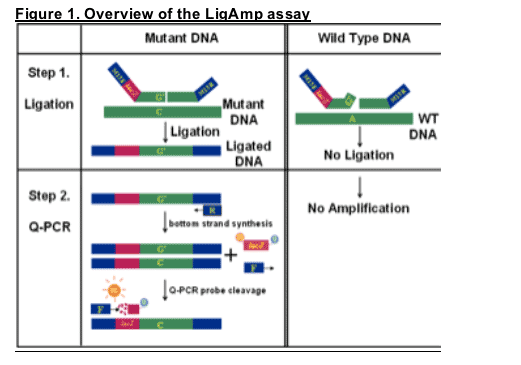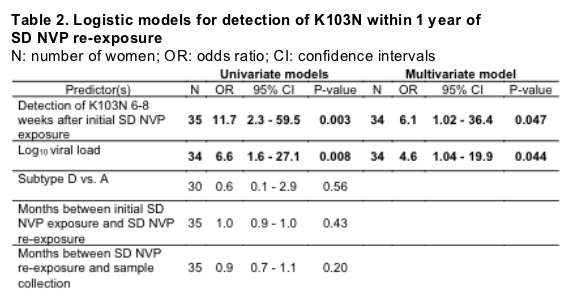 |
 |
 |
| |
Prior Emergence of K103N after Single Dose Nevirapine Predicts Detection of K103N after Exposure to Single Dose Nevirapine in a Subsequent Pregnancy
|
| |
| |
Reported by Jules Levin
Intl HIV Drug Resistance Workshop, Barbados, June 12-16, 2007
TS Flys1, A Mwatha2, LA Guay1, C Nakabiito3, D Donnell2, P Musoke3, F Mmiro3, JB Jackson1, and SH Eshleman1
1 Johns Hopkins University School of Medicine, Baltimore, MD, USA;
2 Fred Hutchinson Cancer Research Center, Seattle, WA USA; and 3 Makerere University, Kampala, Uganda
INTRODUCTION
Single dose nevirapine is used for prevention of HIV mother-to-child transmission (pMTCT), and is often associated with selection of K103N-containing HIV variants. Many women receive single dose (SD) nevirapine (NVP) in multiple pregnancies. It is not known whether emergence of K103N after an initial NVP exposure predicts resistance when NVP is used for pMTCT in a subsequent pregnancy. We compared detection of K103N in women who received SD NVP in the HIVNET 012 trial, and again in a subsequent pregnancy.
AUTHOR CONCLUSION: "Detection of K103N after an initial NVP exposure and pre-NVP viral load independently predict detection of K103N after repeat use of SD NVP. This association could reflect maternal factors (e.g. absorption or clearance of the drug), viral factors (e.g. properties of viral strains that influence fitness of K103N-containing variants), or establishment of a reservoir of resistant variants after the initial exposure".
METHODS
Study subjects
We analyzed samples from 35 women collected 6-8 weeks after their first NVP exposure, and within one year after their second NVP exposure (first available sample). The mean time between the first and second NVP exposures was 3.3 years (range 2-5 years). The mean time between the second NVP exposure and sample collection was 5.6 months (range 0.3-11.6 months).
Viral load testing
Viral loads were determined using the Roche AMPLICOR Monitor Test.
HIV-1 subtyping
Pol region subtypes were determined previously by phylogenetic analysis.
Detection of K103N using the LigAmp assay
K103N-containing HIV-1 variants were detected and quantified using the LigAmp assay. This assay involves mutation-specific oligonucleotide ligation followed by real-time PCR detection (Figure 1). The LigAmp assay was performed using PCR products produced in the ViroSeq HIV-1 Genotyping System, with an assay cutoff of 0.5% K103N.
Statistical Methods
All statistical analyses were conducted using SAS 9 (version 9.1).

RESULTS
Detection of K103N after initial use of NVP predicted detection of K103N after a second NVP exposure. Among the 14 women who had K103N detected after a second NVP exposure, 11 (78.6%) had K103N detected previously. In contrast, among the 21 who did not have K103N detected after a second NVP exposure, only 5 (23.8%) had K103N detected previously (p=0.0014, 2 sample Chi-square test) (Table 1).

In a multivariate logistic regression model, two variables independently predicted detection of K103N after the second NVP exposure: detection of K103N after the first exposure and log10 viral load (Table 2).
Time between first and second NVP use, time between second NVP use and sample collection, and HIV subtype (A vs. D) were not associated with resistance after the second NVP exposure (Table 2).

|
| |
|
 |
 |
|
|